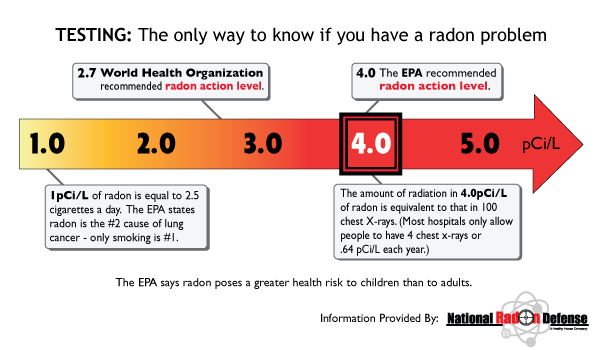Iowa Radon Levels
Why Iowa has radon problems is often a question people will ask when it comes time to purchase a home in Iowa. Radon is a gas that is produced in soils surrounding your home or building and enters through the dirt floors or cracks in the foundation, through pipes or even openings in your floor drains. Basements usually have the most concentrated levels of radon, but homes without basements can also be affected.
In Iowa, the radon levels have a tendency to be higher due to the soils in the Midwest having a lot of uranium and radium in it. When these minerals break down they release the radon gas. Once the radon has entered the home, it goes through the air that you breath daily. In the winter months this gas gets trapped in the soil and cannot filter out into the air. Making this a more dangerous time for radon to enter your home. This odorless gas is very harmful if not detected immediately and you usually you will not even realize that you have been exposed to the gas until you begin noticing signs of lung cancer starting to develop.
All homes, new or old should be tested for radon either by using an at-home test or by having a professional contractor come in to perform it. Getting accurate results is important so that you will know what you need to do address the problem.
Call AmeriServ Radon Mitigation Iowa for services provided in many Iowa cities including Des Moines, Carroll, Sioux City, and Fort Dodge. Checking your home frequently and having a radon detector is a good idea to help protect you and your family from this deadly cancer causing gas.
 Our Response to COVID-19
Our Response to COVID-19 
